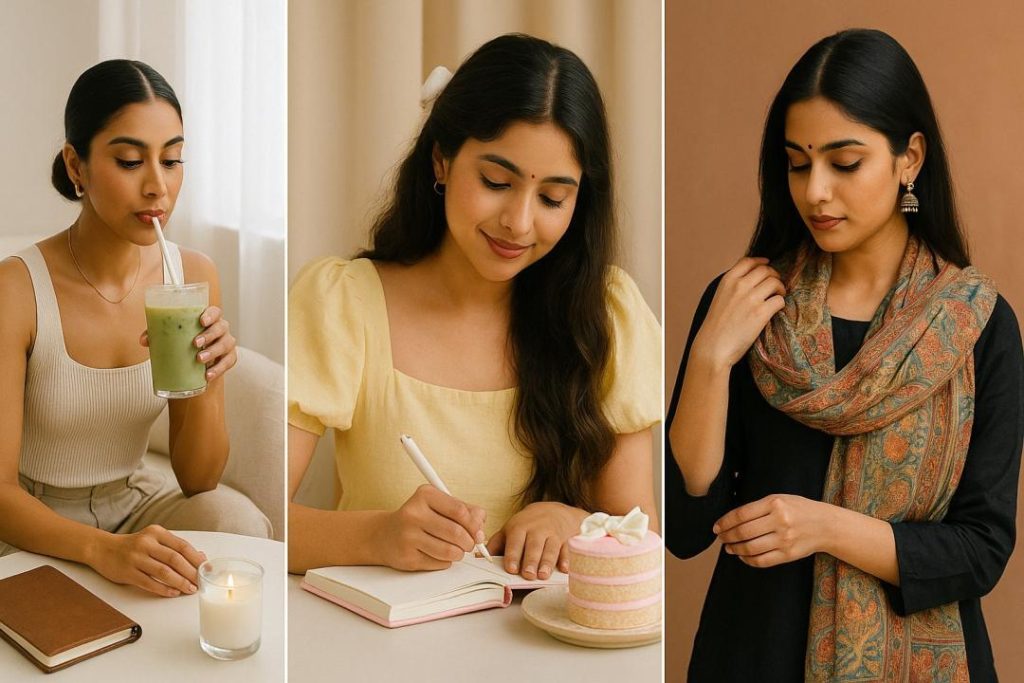
Is Pinterest really the Internet’s safe space or a trap?
Pinterest, often considered a tranquil escape from the chaos of the internet, has become a go-to platform for many users seeking creative inspiration and a sense of community. With its visually appealing boards, aesthetically curated pins, and seemingly endless supply of inspiring content, it’s easy to get lost in the world of Pinterest. However, beneath its serene surface, Pinterest subtly promotes consumerism and conformity, shaping identities and encouraging curated lifestyles.
In a recent article by Ascent, “Pinterest Aesthetics: The Content Core You,” the author delves into the world of Pinterest, exploring the ways in which the platform shapes our perceptions of beauty, creativity, and self-expression. (1)
One of the primary ways Pinterest influences our perceptions is through its use of “aesthetic cores.” These cores refer to the platform’s curated selection of visually appealing images and themes that are designed to evoke a particular emotional response. Aesthetic cores are often centered around specific styles, such as bohemian, minimalist, or coastal chic, and are created to appeal to a wide range of users.
While aesthetic cores may seem harmless, they can have a profound impact on our perceptions of beauty and creativity. By presenting a narrow range of styles and themes, Pinterest creates a sense of conformity, encouraging users to conform to certain standards of beauty and creativity. This can lead to a homogenization of creative expression, as users feel pressure to adhere to certain aesthetic norms.
Influencer trends are another way in which Pinterest shapes our perceptions. With the rise of social media, influencers have become a significant force in shaping consumer behavior. Pinterest influencers, in particular, have a significant impact on the platform, as they often create content that is both visually appealing and designed to drive sales.
However, the influence of Pinterest influencers can be problematic. By promoting certain products and ideas, influencers can create a sense of FOMO (fear of missing out) among their followers, encouraging them to purchase products or adopt certain lifestyles. This can lead to a culture of consumption, as users feel pressure to keep up with the latest trends and products.
Rebranded South Asian traditions are another area where Pinterest promotes consumerism and conformity. In recent years, Pinterest has seen a surge in popularity of rebranded South Asian traditions, such as Indian and Pakistani weddings, as well as traditional clothing and accessories. While these cultural practices can be beautiful and meaningful, they are often rebranded and repackaged for Western audiences, stripping them of their cultural context and significance.
This rebranding of South Asian traditions can be problematic, as it perpetuates a culture of appropriation and exoticization. By taking cultural practices out of context and presenting them as trendy and desirable, Pinterest reinforces harmful stereotypes and perpetuates a culture of consumerism.
Furthermore, the rebranding of South Asian traditions on Pinterest can also have a profound impact on the cultural identity of South Asian individuals. By presenting these traditions as trendy and desirable, Pinterest creates a sense of pressure among South Asian users to conform to certain cultural norms. This can lead to a homogenization of cultural identity, as users feel pressure to adopt certain cultural practices in order to fit in.
So, is Pinterest really the Internet’s safe space or a trap? While Pinterest may seem like a harmless platform, its subtle promotion of consumerism and conformity has profound implications for our perceptions of beauty, creativity, and self-expression. By presenting a narrow range of styles and themes, Pinterest creates a sense of conformity, encouraging users to conform to certain standards of beauty and creativity.
Influencer trends and rebranded South Asian traditions only add to the problem, as they perpetuate a culture of consumption and exoticization. Rather than a safe space, Pinterest can be seen as a trap, one that reinforces harmful stereotypes and perpetuates a culture of conformity.
So, what can we do to break free from the trap of Pinterest? First and foremost, we must be aware of the ways in which the platform shapes our perceptions. By recognizing the ways in which Pinterest presents a narrow range of styles and themes, we can begin to question the norms and standards of beauty and creativity that are presented to us.
Secondly, we must be mindful of the ways in which our actions on Pinterest impact others. By promoting certain products and ideas, we can perpetuate a culture of consumption and conformity. Instead, we should strive to promote diversity and inclusivity, celebrating the unique perspectives and experiences of others.
Finally, we must recognize the cultural significance of South Asian traditions and cultural practices. Rather than rebranding and repackaging these practices for Western audiences, we should strive to understand and respect their cultural context and significance.
In conclusion, Pinterest may seem like a harmless platform, but its subtle promotion of consumerism and conformity has profound implications for our perceptions of beauty, creativity, and self-expression. By recognizing the ways in which the platform shapes our perceptions, being mindful of our actions on Pinterest, and recognizing the cultural significance of South Asian traditions and cultural practices, we can break free from the trap of Pinterest and create a more inclusive and diverse online community.
References:
(1) https://ascendants.in/spotlight/pinterest-aesthetics-content-core-you/
Note: The article “Pinterest Aesthetics: The Content Core You” by Ascent was used as a reference for this blog post.






